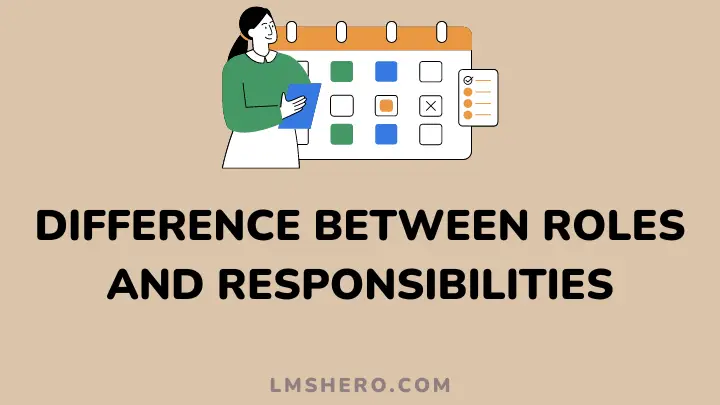You have written a course which provides in-depth knowledge of the subject. But no one is buying because you have no idea how to promote your online course.
Many online course instructors are sitting at this table. They are experts at what they teach and have a perfectly structured course. But there is one problem, no one is buying, because they are not promoting.
How do you promote your online course to get people to gain from your wealth of knowledge while also paying for the time you spent putting it together? In this article, we will discuss various ideas that will help you promote your online course.
1. Perform a Keyword Research

The first step to promoting your online course is to make it visible on Google through SEO. So, we will start with how to optimize your online class for search on search engines.
The first thing to do is keyword research. Doing this will tell you what words or phrases your prospects are typing in the search bar when searching for course topics related to yours.
To make things easier, use a keyword research tool like Moz or SEMrush to search for keywords related to your course. Please write down the list of keywords and use it for the next step.
Optimize Your Course
The next step is optimizing your course for search by placing the competitive keywords you’ve gathered to your course titles, meta tags, and description. Doing this will help search engines locate your course and display it for potential buyers to see.
2. Running Ads

Another way to promote your online course is through advertising. Yes, you have to spend money, no matter how little, to make money.
You can choose to run an ad using Google Ads or social media. When you use ads, your online course will only be visible to people who might be interested.
Advertising with Google Ads is the best place to start. When you place ads there, your course will show up when people search for your course-related keywords. Your course will show up with a sponsored ad sign close to it, so people will know it’s an ad.
If you are interested in this ad, create an account with Google Ads and follow their prompts to get started.
You can use Facebook ads to target people interested in your course through their demographics, interest, and behaviors.
You can also advertise your online course by placing your ad banners on websites and blogs your target audience visits.
Get in touch with the owners of the site and inquire about the costs. But ensure they have a vast viewership to increase the chances of conversion and sales.
3. Promote With Your website

You can also create a website to promote your online course, especially if you hope to develop more courses in the future. Having your website allows you to promote your business the way you wish without stepping on your toes.
One thing to note is that your website doesn’t have to contain multiple pages like what you see companies do. A single landing page will do, especially if it’s your first time writing a course and you’re not sure if you’ll create another one.
Remember to include your contact information, including links to your social media on your website, so people can contact you if they wish to get more details about the course.
If you’ve decided to create a multiple-page website, be sure to add a blog. Or you can create a stand-alone blog for your online course. Blogs can help you promote your online course in many ways.
Firstly, you can share your expertise on the course topic through your blog. By feeding readers snippets of what you know, they’ll be interested in delving deeper by paying for the online course.
The more you post on the blog, the more you’ll attract organic traffic, which will make it rank on search engines and become more visible. The more visible your blog is, the more people are attracted to it.
When blogging, ensure you include the keywords you found during your search in your blog posts. Use it in the meta description, topic, introduction of your post, subheadings, and body.
You can also use the keywords to come up with various topics for your blog. Then subtly advertise your course in each post.
4. Get Social Proof

People would like to check the reviews on a product online before they buy it. When it comes to doing business online, trust is everything. But most people would rather trust a product or service that has social proof because there are many online scammers these days.
To get social proof, you need reviews from those who bought your course and found it useful. Ask your past customers for reviews and post them below your course description. Please include links to their social network to add credibility to the review.
You can also ask past buyers to leave a review on review platforms. These platforms show unbiased reviews of products and services made by people who have used them. You can create an account with the platforms and send a link to your customers to leave a review.
If, by chance, you see a negative review on any of these platforms, don’t be quick to react defensively. Instead, respond with empathy.
Put yourself in the buyer’s shoes and understand their resentment, so you know how to respond. Apologize, offer compensation if possible, and leave a promise to resolve the issue.
Always remember to keep the customers’ contacts, even after they’ve bought your course. You’ll need them for reviews, selling other products, or using their details for future ad campaigns.
5. Promote through Social Media

Use your social networks like LinkedIn, Facebook, Instagram, and Twitter to let your friends and their friends know about your course. Start by adding a link to your course on your social media bios. Write positive things about it, include a link, and post.
Remember to use relevant hashtags when posting. Use the recommended hashtags for each social network. For example, ensure you are using 30 hashtags for Instagram.
You also want to create a Facebook page specially dedicated to the online course. Build a community of like minds by posting relevant content and, at the right time, promoting your course to them.
Conclusion
You can promote your online course in so many ways. You only need to identify the right channel, where you are most likely to find your target audience.
Also, listen to your customer’s feedback to learn how to upgrade your course and provide more value to potential students.
Are you looking to increase your online course engagement? Here are effective ways you can increase your online course engagement.
Thanks for reading.






